Kuan-Yu Chen
HypR: A comprehensive study for ASR hypothesis revising with a reference corpus
Sep 19, 2023

Abstract:With the development of deep learning, automatic speech recognition (ASR) has made significant progress. To further enhance the performance, revising recognition results is one of the lightweight but efficient manners. Various methods can be roughly classified into N-best reranking methods and error correction models. The former aims to select the hypothesis with the lowest error rate from a set of candidates generated by ASR for a given input speech. The latter focuses on detecting recognition errors in a given hypothesis and correcting these errors to obtain an enhanced result. However, we observe that these studies are hardly comparable to each other as they are usually evaluated on different corpora, paired with different ASR models, and even use different datasets to train the models. Accordingly, we first concentrate on releasing an ASR hypothesis revising (HypR) dataset in this study. HypR contains several commonly used corpora (AISHELL-1, TED-LIUM 2, and LibriSpeech) and provides 50 recognition hypotheses for each speech utterance. The checkpoint models of the ASR are also published. In addition, we implement and compare several classic and representative methods, showing the recent research progress in revising speech recognition results. We hope the publicly available HypR dataset can become a reference benchmark for subsequent research and promote the school of research to an advanced level.
Trompt: Towards a Better Deep Neural Network for Tabular Data
May 31, 2023



Abstract:Tabular data is arguably one of the most commonly used data structures in various practical domains, including finance, healthcare and e-commerce. The inherent heterogeneity allows tabular data to store rich information. However, based on a recently published tabular benchmark, we can see deep neural networks still fall behind tree-based models on tabular datasets. In this paper, we propose Trompt--which stands for Tabular Prompt--a novel architecture inspired by prompt learning of language models. The essence of prompt learning is to adjust a large pre-trained model through a set of prompts outside the model without directly modifying the model. Based on this idea, Trompt separates the learning strategy of tabular data into two parts. The first part, analogous to pre-trained models, focus on learning the intrinsic information of a table. The second part, analogous to prompts, focus on learning the variations among samples. Trompt is evaluated with the benchmark mentioned above. The experimental results demonstrate that Trompt outperforms state-of-the-art deep neural networks and is comparable to tree-based models.
A Lexical-aware Non-autoregressive Transformer-based ASR Model
May 18, 2023


Abstract:Non-autoregressive automatic speech recognition (ASR) has become a mainstream of ASR modeling because of its fast decoding speed and satisfactory result. To further boost the performance, relaxing the conditional independence assumption and cascading large-scaled pre-trained models are two active research directions. In addition to these strategies, we propose a lexical-aware non-autoregressive Transformer-based (LA-NAT) ASR framework, which consists of an acoustic encoder, a speech-text shared encoder, and a speech-text shared decoder. The acoustic encoder is used to process the input speech features as usual, and the speech-text shared encoder and decoder are designed to train speech and text data simultaneously. By doing so, LA-NAT aims to make the ASR model aware of lexical information, so the resulting model is expected to achieve better results by leveraging the learned linguistic knowledge. A series of experiments are conducted on the AISHELL-1, CSJ, and TEDLIUM 2 datasets. According to the experiments, the proposed LA-NAT can provide superior results than other recently proposed non-autoregressive ASR models. In addition, LA-NAT is a relatively compact model than most non-autoregressive ASR models, and it is about 58 times faster than the classic autoregressive model.
A context-aware knowledge transferring strategy for CTC-based ASR
Oct 12, 2022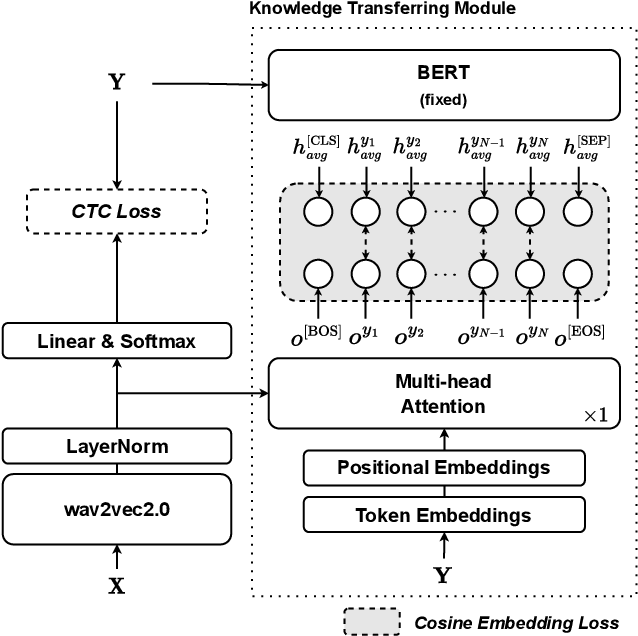
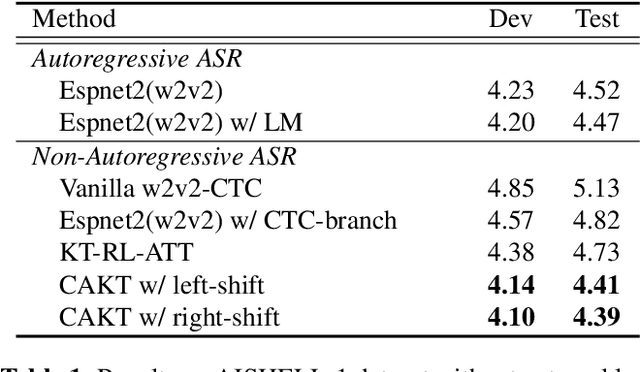
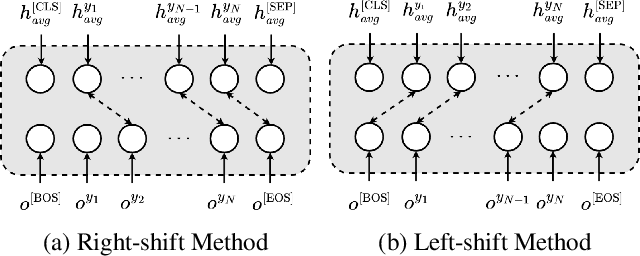
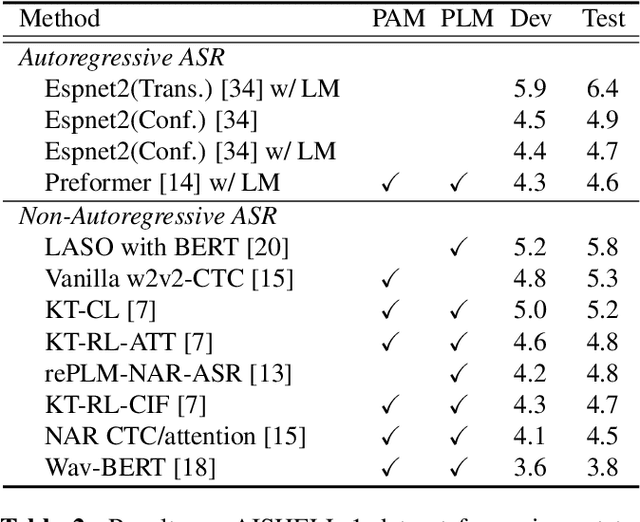
Abstract:Non-autoregressive automatic speech recognition (ASR) modeling has received increasing attention recently because of its fast decoding speed and superior performance. Among representatives, methods based on the connectionist temporal classification (CTC) are still a dominating stream. However, the theoretically inherent flaw, the assumption of independence between tokens, creates a performance barrier for the school of works. To mitigate the challenge, we propose a context-aware knowledge transferring strategy, consisting of a knowledge transferring module and a context-aware training strategy, for CTC-based ASR. The former is designed to distill linguistic information from a pre-trained language model, and the latter is framed to modulate the limitations caused by the conditional independence assumption. As a result, a knowledge-injected context-aware CTC-based ASR built upon the wav2vec2.0 is presented in this paper. A series of experiments on the AISHELL-1 and AISHELL-2 datasets demonstrate the effectiveness of the proposed method.
A Transformer-based Cross-modal Fusion Model with Adversarial Training for VQA Challenge 2021
Jun 24, 2021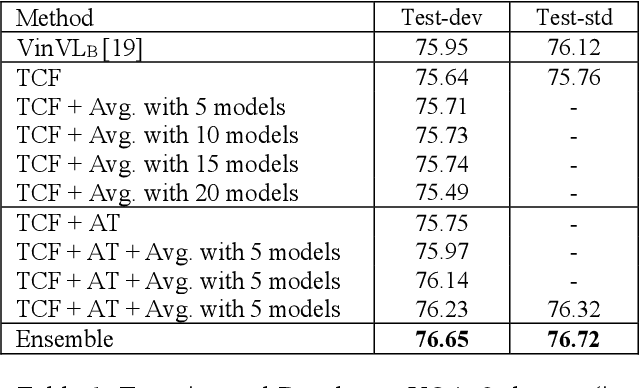
Abstract:In this paper, inspired by the successes of visionlanguage pre-trained models and the benefits from training with adversarial attacks, we present a novel transformerbased cross-modal fusion modeling by incorporating the both notions for VQA challenge 2021. Specifically, the proposed model is on top of the architecture of VinVL model [19], and the adversarial training strategy [4] is applied to make the model robust and generalized. Moreover, two implementation tricks are also used in our system to obtain better results. The experiments demonstrate that the novel framework can achieve 76.72% on VQAv2 test-std set.
Non-autoregressive Transformer-based End-to-end ASR using BERT
Apr 10, 2021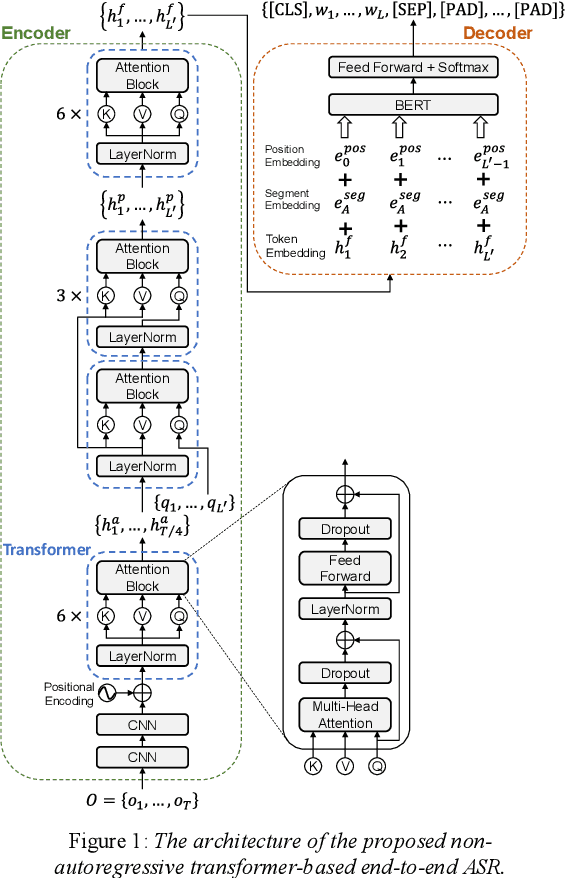
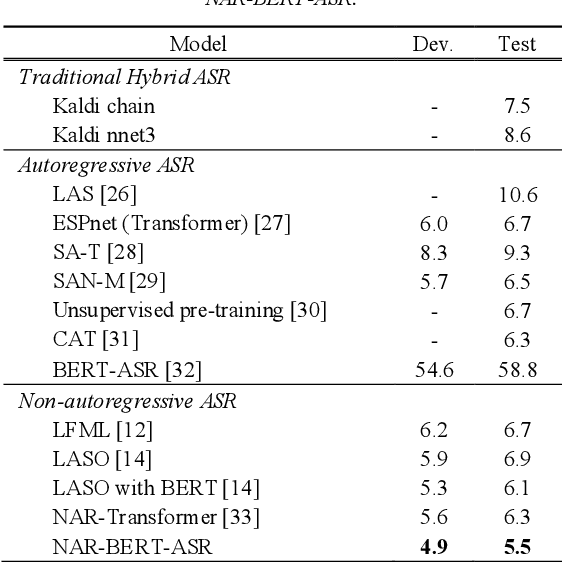
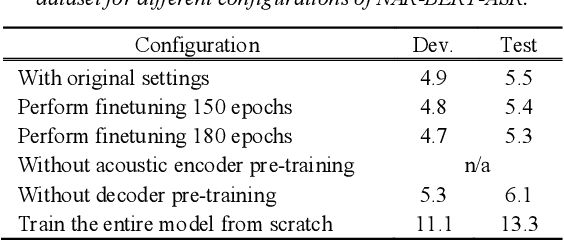
Abstract:Transformer-based models have led to a significant innovation in various classic and practical subjects, including speech processing, natural language processing, and computer vision. On top of the transformer, the attention-based end-to-end automatic speech recognition (ASR) models have become a popular fashion in recent years. Specifically, the non-autoregressive modeling, which can achieve fast inference speed and comparable performance when compared to conventional autoregressive methods, is an emergent research topic. In the context of natural language processing, the bidirectional encoder representations from transformers (BERT) model has received widespread attention, partially due to its ability to infer contextualized word representations and to obtain superior performances of downstream tasks by performing only simple fine-tuning. In order to not only inherit the advantages of non-autoregressive ASR modeling, but also receive benefits from a pre-trained language model (e.g., BERT), a non-autoregressive transformer-based end-to-end ASR model based on BERT is presented in this paper. A series of experiments conducted on the AISHELL-1 dataset demonstrates competitive or superior results of the proposed model when compared to state-of-the-art ASR systems.
Speech Recognition by Simply Fine-tuning BERT
Jan 30, 2021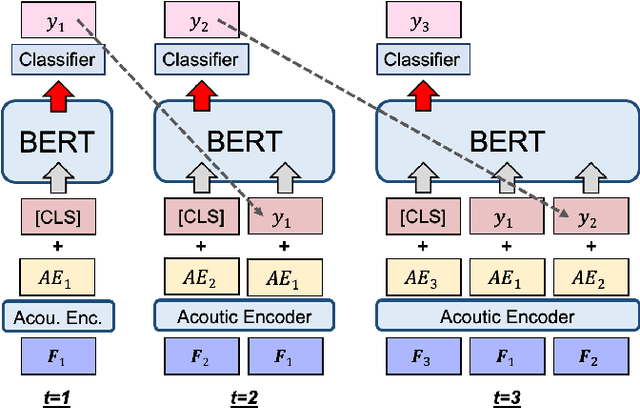
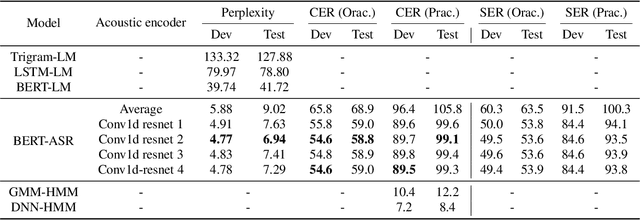
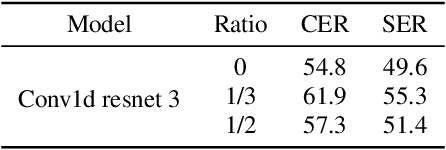
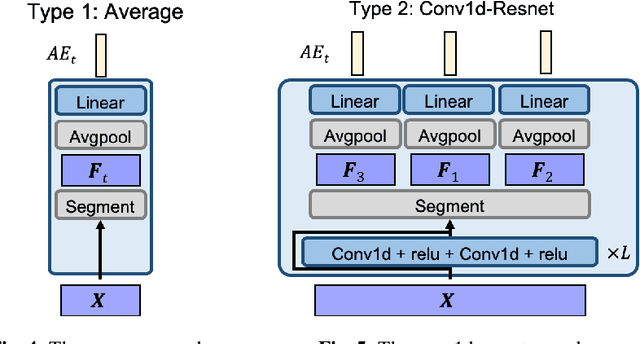
Abstract:We propose a simple method for automatic speech recognition (ASR) by fine-tuning BERT, which is a language model (LM) trained on large-scale unlabeled text data and can generate rich contextual representations. Our assumption is that given a history context sequence, a powerful LM can narrow the range of possible choices and the speech signal can be used as a simple clue. Hence, comparing to conventional ASR systems that train a powerful acoustic model (AM) from scratch, we believe that speech recognition is possible by simply fine-tuning a BERT model. As an initial study, we demonstrate the effectiveness of the proposed idea on the AISHELL dataset and show that stacking a very simple AM on top of BERT can yield reasonable performance.
Investigation of Sentiment Controllable Chatbot
Jul 11, 2020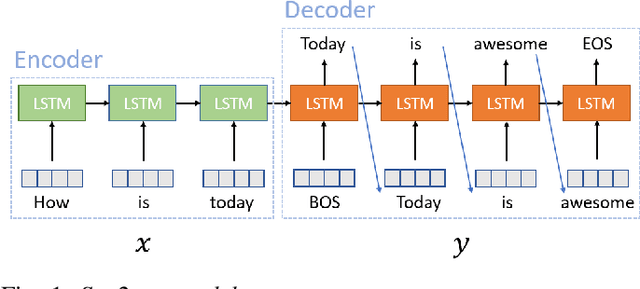
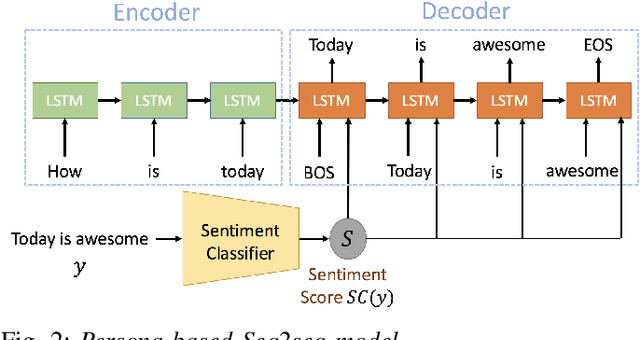

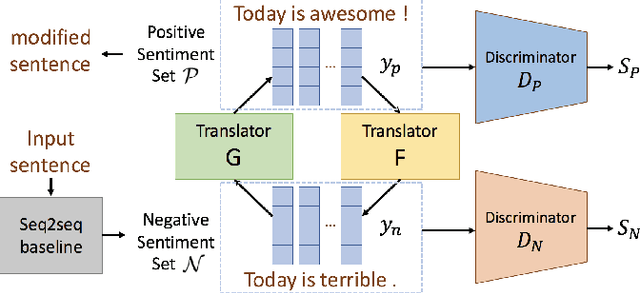
Abstract:Conventional seq2seq chatbot models attempt only to find sentences with the highest probabilities conditioned on the input sequences, without considering the sentiment of the output sentences. In this paper, we investigate four models to scale or adjust the sentiment of the chatbot response: a persona-based model, reinforcement learning, a plug and play model, and CycleGAN, all based on the seq2seq model. We also develop machine-evaluated metrics to estimate whether the responses are reasonable given the input. These metrics, together with human evaluation, are used to analyze the performance of the four models in terms of different aspects; reinforcement learning and CycleGAN are shown to be very attractive.
An Audio-enriched BERT-based Framework for Spoken Multiple-choice Question Answering
May 25, 2020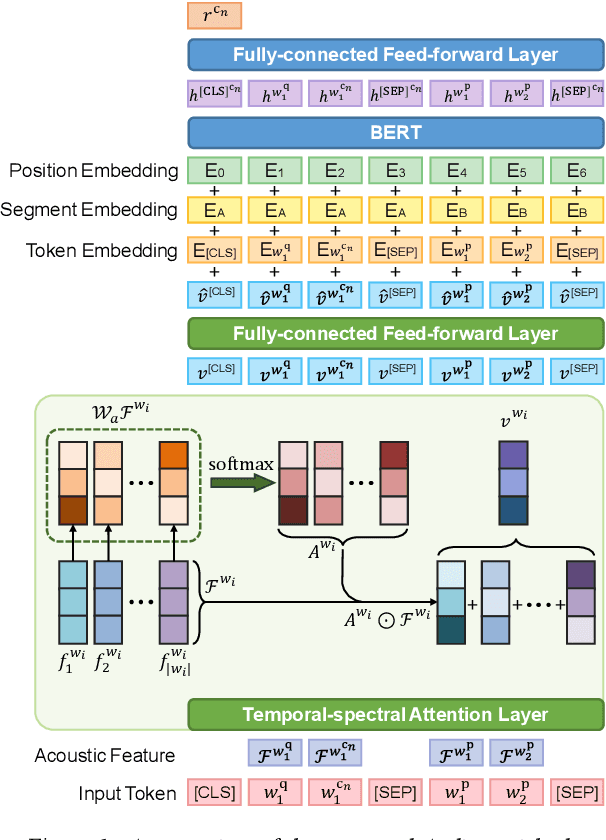
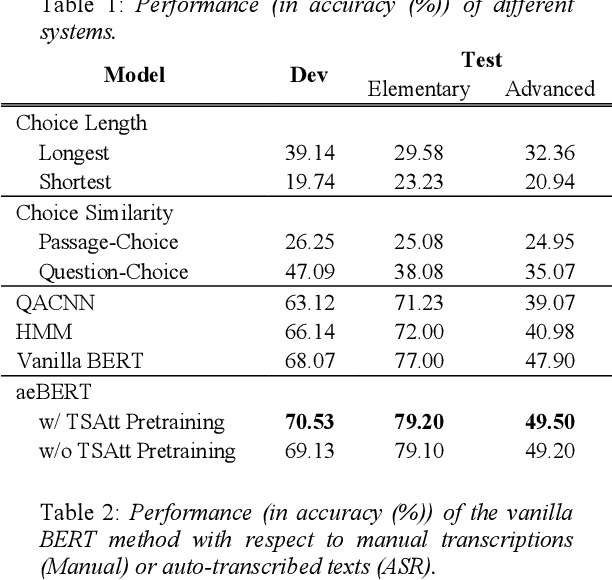
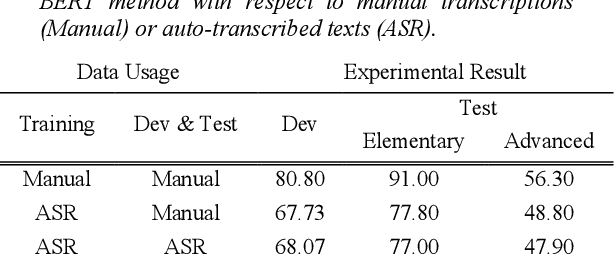
Abstract:In a spoken multiple-choice question answering (SMCQA) task, given a passage, a question, and multiple choices all in the form of speech, the machine needs to pick the correct choice to answer the question. While the audio could contain useful cues for SMCQA, usually only the auto-transcribed text is utilized in system development. Thanks to the large-scaled pre-trained language representation models, such as the bidirectional encoder representations from transformers (BERT), systems with only auto-transcribed text can still achieve a certain level of performance. However, previous studies have evidenced that acoustic-level statistics can offset text inaccuracies caused by the automatic speech recognition systems or representation inadequacy lurking in word embedding generators, thereby making the SMCQA system robust. Along the line of research, this study concentrates on designing a BERT-based SMCQA framework, which not only inherits the advantages of contextualized language representations learned by BERT, but integrates the complementary acoustic-level information distilled from audio with the text-level information. Consequently, an audio-enriched BERT-based SMCQA framework is proposed. A series of experiments demonstrates remarkable improvements in accuracy over selected baselines and SOTA systems on a published Chinese SMCQA dataset.
A neural document language modeling framework for spoken document retrieval
Oct 31, 2019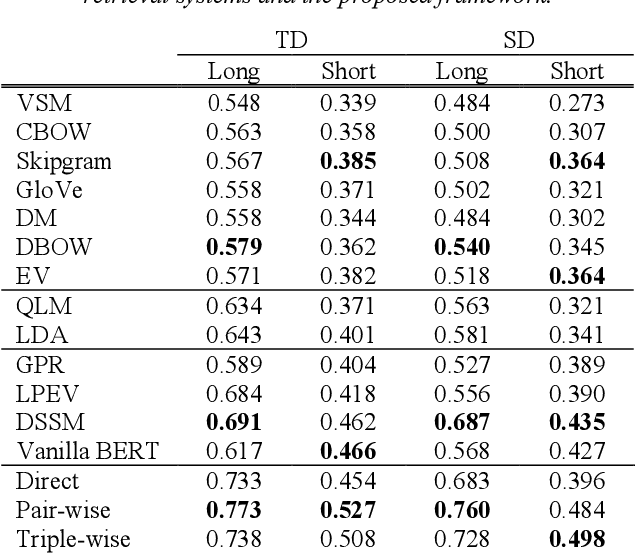
Abstract:Recent developments in deep learning have led to a significant innovation in various classic and practical subjects, including speech recognition, computer vision, question answering, information retrieval and so on. In the context of natural language processing (NLP), language representations have shown giant successes in many downstream tasks, so the school of studies have become a major stream of research recently. Because the immenseness of multimedia data along with speech have spread around the world in our daily life, spoken document retrieval (SDR) has become an important research subject in the past decades. Targeting on enhancing the SDR performance, the paper concentrates on proposing a neural retrieval framework, which assembles the merits of using language modeling (LM) mechanism in SDR and leveraging the abstractive information learned by the language representation models. Consequently, to our knowledge, this is a pioneer study on supervised training of a neural LM-based SDR framework, especially combined with the pretrained language representation methods.
 Add to Chrome
Add to Chrome Add to Firefox
Add to Firefox Add to Edge
Add to Edge